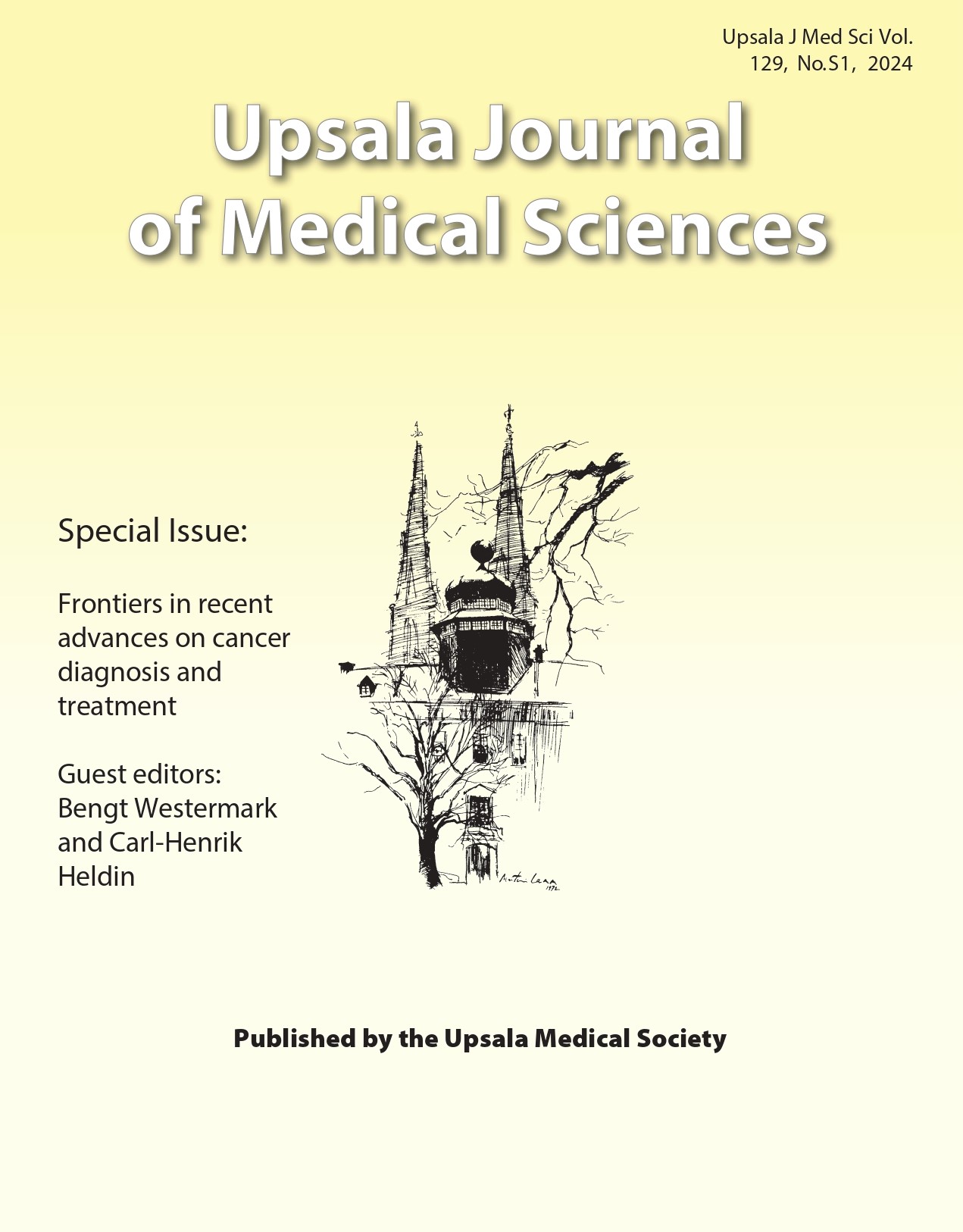White horses – non-coding sequences drive premature hair greying and predisposition to melanoma
Abstract
The Grey allele in horses is causing premature hair greying and susceptibility to melanoma. The causal mutation is a 4.6 kb tandem duplication in intron 6 of the Syntaxin 17 gene. A recent study demonstrated that the most common allele at the Grey locus (G3) involves three tandem copies of this sequence, whilst a more rare allele (G2) has two tandem copies and the wild-type allele (G1) only one copy. The G3 allele is causing fast greying and high incidence of skin melanoma, whereas the G2 allele is causing slow greying and no obvious increase in melanoma incidence. Further somatic copy number expansion has been documented in melanoma tissue from Grey horses. Functional studies showed that this intronic sequence acts as a weak melanocyte-specific enhancer that becomes substantially stronger by the copy number expansion. The Grey mutation is associated with upregulated expression of both Syntaxin 17 and the neighbouring NR4A3 gene in Grey horse melanomas. It is still an open question which of these genes is most important for the phenotypic effects or if causality is due to the combined effect of upregulation of both genes. Interestingly, RNAseq data in the Human Protein Atlas give support for a possible role of NR4A3 because it is particularly upregulated in human skin cancer, and it belongs to a cluster of genes associated with skin cancer and melanin biosynthesis. The Grey mutation and its association with melanoma provide a possibility to study the path to tumour development in numerous Grey horses carrying exactly the same predisposing mutation.
Downloads
References
2. Tassabehji M, Newton VE, Read AP. Waardenburg syndrome type 2 caused by mutations in the human microphthalmia (MITF) gene. Nat Genet. 1994;8:251–5. doi: 10.1038/ng1194-251
3. Izumi K, Kohta T, Kimura Y, Ishida S, Takahashi T, Ishiko A, et al. Tietz syndrome: unique phenotype specific to mutations of MITF nuclear localization signal. Clin Genet. 2008;74:93–5. doi: 10.1111/j.1399-0004.2008.01010.x
4. Karlsson EK, Baranowska I, Wade CM, Salmon Hillbertz NHC, Zody MC, Andersson N, et al. Efficient mapping of mendelian traits in dogs through genome-wide association. Nat Genet. 2007;39:1321–8. doi: 10.1038/ng.2007.10
5. Seltenhammer MH, Simhofer H, Scherzer S, Zechner P, Curik I, Sölkner J, et al. Equine melanoma in a population of 296 grey Lipizzaner horses. Equine Vet J. 2003;35:153–7. doi: 10.2746/042516403776114234
6. Valentine BA. Equine melanocytic tumors: a retrospective study of 53 horses (1988 to 1991). J Vet Intern Med. 1995;9:291–7. doi: 10.1111/j.1939-1676.1995.tb01087.x
7. Jeglum KA. Melanomas. In: Robinson NE, editor. Current therapy in equine medicine, 4th edn. Pennsylvania, PA: W.B. Saunders Company, 1999; p. 399–400.
8. Seltenhammer MH, Heere-Ress E, Brandt S, Druml T, Jansen B, Pehamberger H, et al. Comparative histopathology of grey-horse-melanoma and human malignant melanoma. Pigment Cell Res. 2004;17:674–81. doi: 10.1111/j.1600-0749.2004.00192.x
9. Pielberg G, Mikko S, Sandberg K, Andersson L. Comparative linkage mapping of the grey coat colour gene in horses. Anim Genet. 2005;36:390–5. doi: 10.1111/j.1365-2052.2005.01334.x
10. Sundström E, Komisarczuk AZ, Jiang L, Golovko A, Navratilova P, Rinkwitz S, et al. Identification of a melanocyte-specific, MITF-dependent regulatory element in the intronic duplication causing hair greying and melanoma in horses. Pigment Cell Melanoma Res. 2012;25:28–36. doi: 10.1111/j.1755-148X.2011.00902.x
11. Steingrimsson E, Copeland NG, Jenkins NA. Melanocytes and the microphthalmia transcription factor network. Annu Rev Genet. 2004;38:365–411. https://doi.org/10.1146/annurev.genet.38.072902.092717
12. Nowacka-Woszuk J, Mackowski M, Stefaniuk-Szmukier M, Cieslak J. The equine graying with age mutation of the STX17 gene: a copy number study using droplet digital PCR reveals a new pattern. Anim Genet. 2021;52:223–7. doi: 10.1111/age.13044
13. Hastings P, Lupski JR, Rosenberg S, Ira G. Mechanisms of change in gene copy number. Nat Rev Genet. 2009;10:551–64. doi: 10.1038/nrg2593
14. Rubin C-J, Hodge M, Naboulsi R, Beckman M, Bellone RR, Kallenberg A, et al. An intronic copy number variation in Syntaxin 17 determines speed of greying and melanoma incidence in Grey horses. bioRxiv. 2023.11.05.565619. doi: 10.1101/2023.11.05.565619
15. Sundström E, Imsland F, Mikko S, Wade C, Sigurdsson S, Pielberg G, et al. Copy number expansion of the STX17 duplication in melanoma tissue from Grey horses. BMC Genomics. 2012;13:365. doi: 10.1186/1471-2164-13-365
16. Jiang L, Campagne C, Sundström E, Sousa P, Imran S, Seltenhammer M, et al. Constitutive activation of the ERK pathway in melanoma and skin melanocytes in Grey horses. BMC Cancer. 2014;14:857. doi: 10.1186/1471-2407-14-857
17. Viret C, Faure M. Regulation of syntaxin 17 during autophagosome maturation. Trends Cell Biol. 2019;29:1–3. doi: 10.1016/j.tcb.2018.10.003
18. Pangilinan C, Xu X, Herlyn M, Liang C. Autophagy paradox: strategizing treatment modality in melanoma. Curr Treat Options Oncol. 2023;24:130–45. doi: 10.1007/s11864-023-01053-8
19. Safe S, Karki K. The paradoxical roles of orphan nuclear receptor 4A (NR4A) in cancer. Mol Cancer Res. 2021;19:180–91. doi: 10.1158/1541-7786.MCR-20-0707
20. Lenz J, Klubíčková N, Ptáková N, Hájková V, Grossmann P, Šteiner P, et al. Extraskeletal myxoid chondrosarcoma: a study of 17 cases focusing on the diagnostic utility of INSM1 expression and presenting rare morphological variants associated with non-EWSR1::NR4A3 fusions. Hum Pathol. 2023;134:19–29. doi: 10.1016/j.humpath.2022.12.005
21. Zhao ZZ, Duffy DL, Thomas SA, Martin NG, Hayward NK, Montgomery GW. Polymorphisms in the syntaxin 17 gene are not associated with human cutaneous malignant melanoma. Melanoma Res. 2009;19:80–6. doi: 10.1097/CMR.0b013e328322fc45

This work is licensed under a Creative Commons Attribution 4.0 International License.
Authors retain copyright of their work, with first publication rights granted to Upsala Medical Society. Read the full Copyright- and Licensing Statement.








